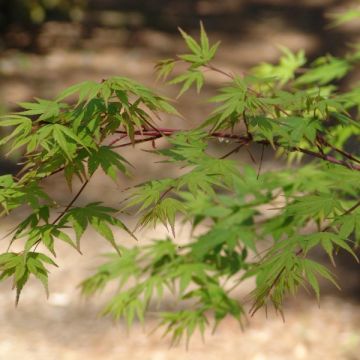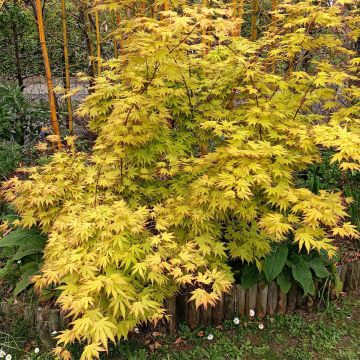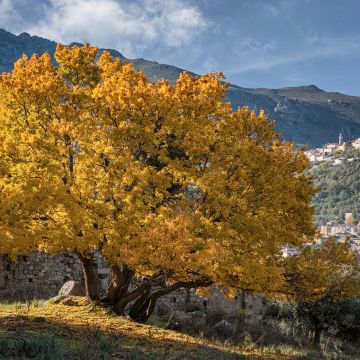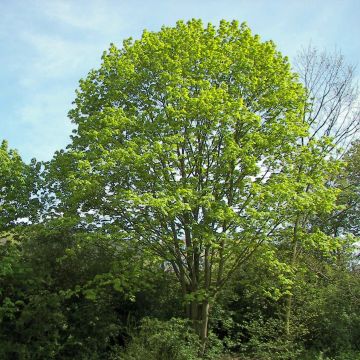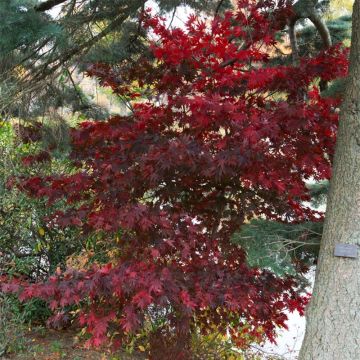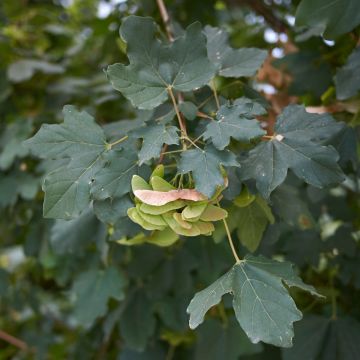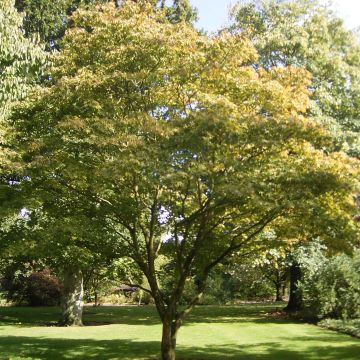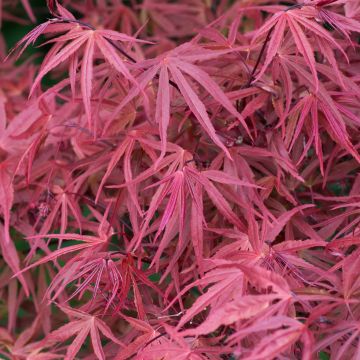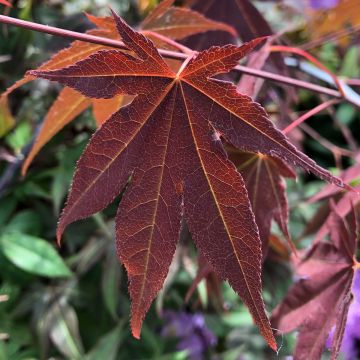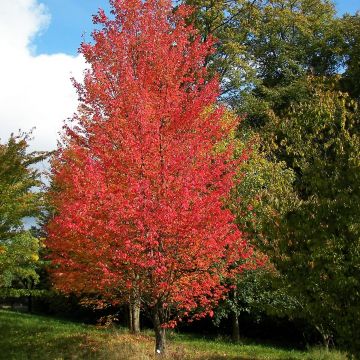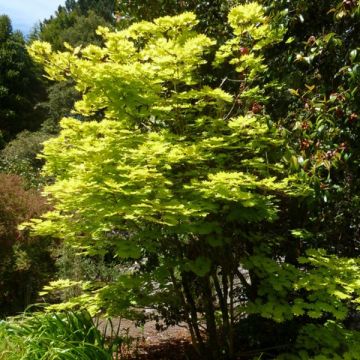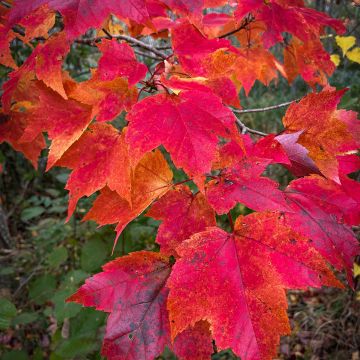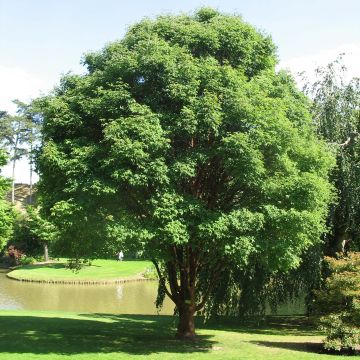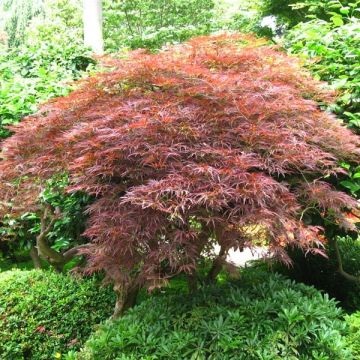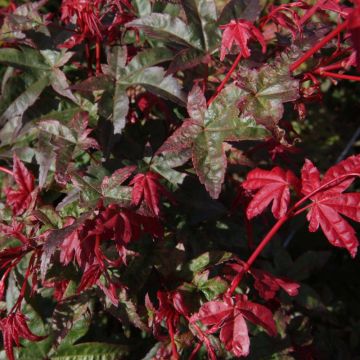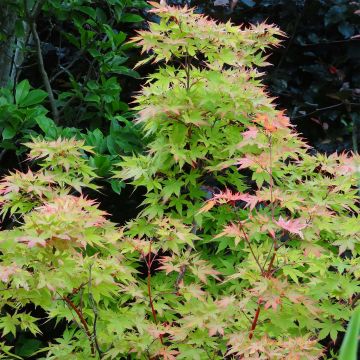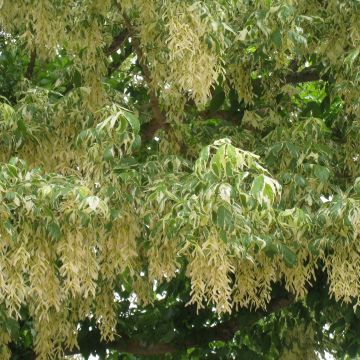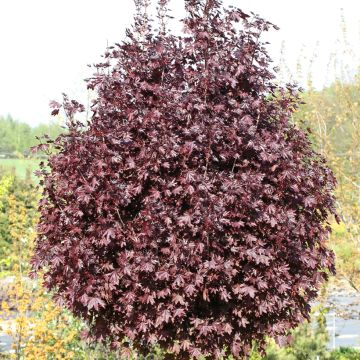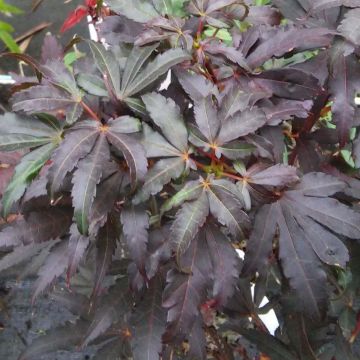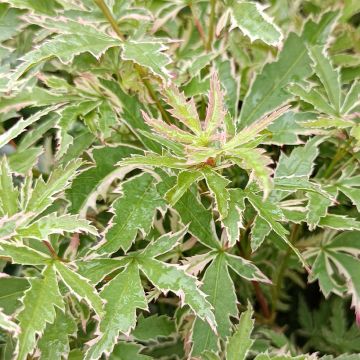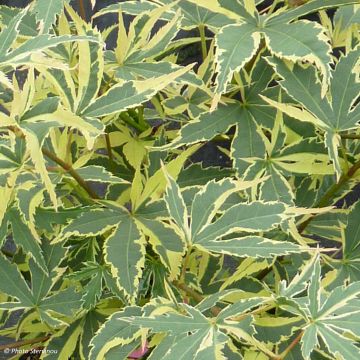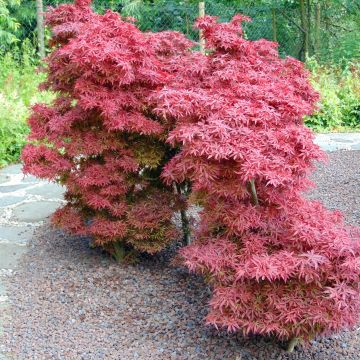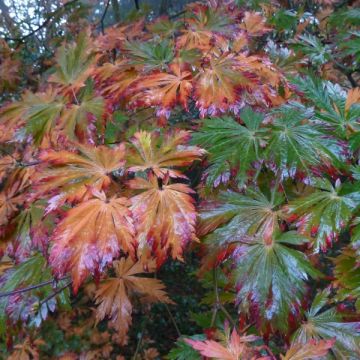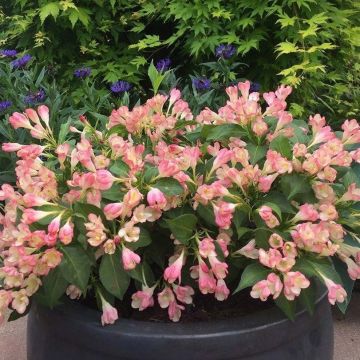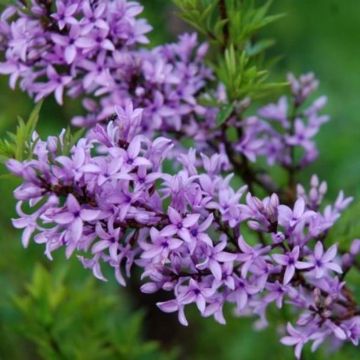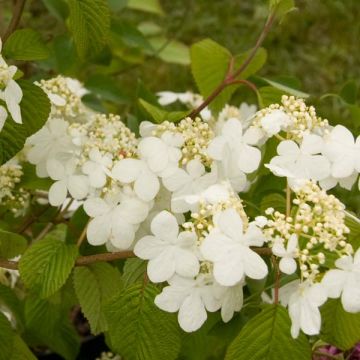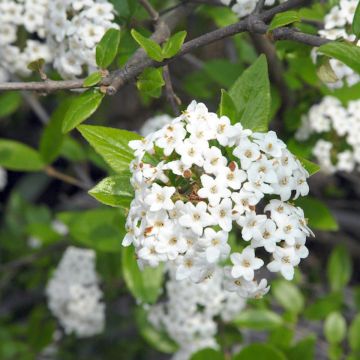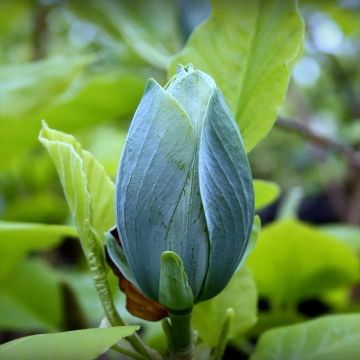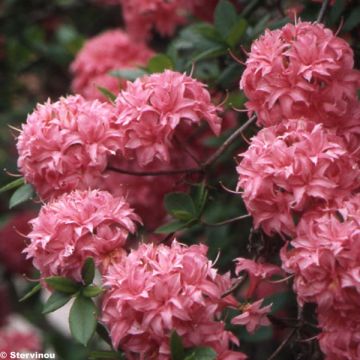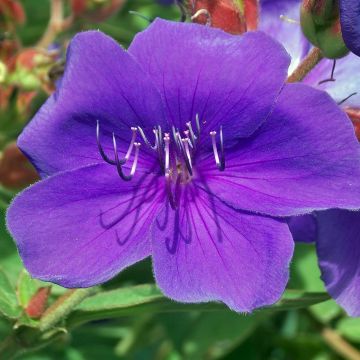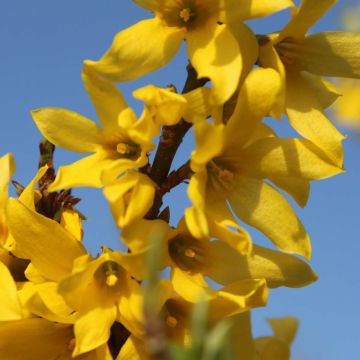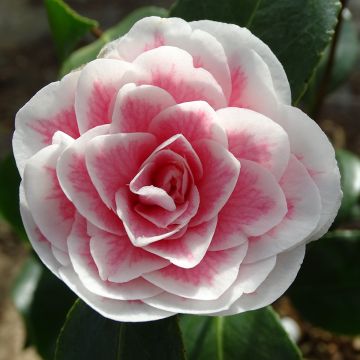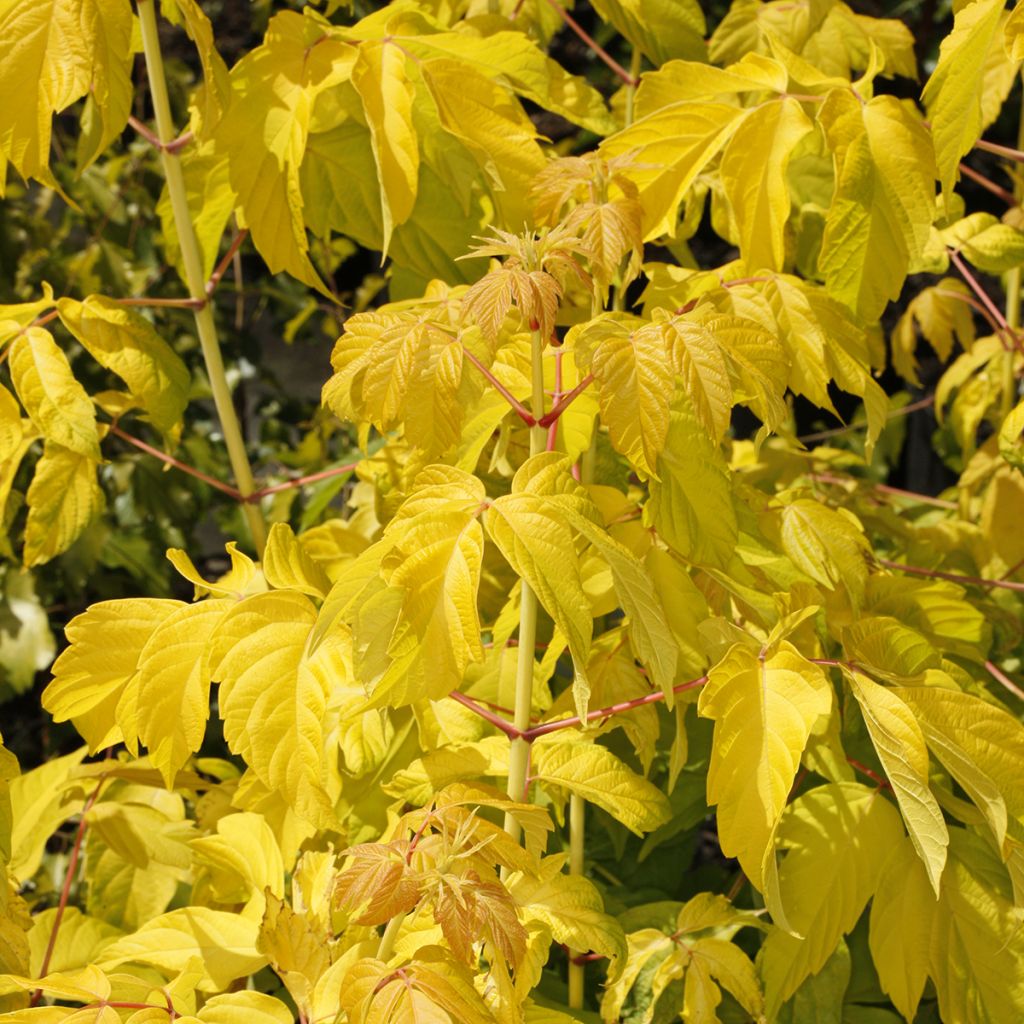

Acer negundo Auratum - Boxelder maple
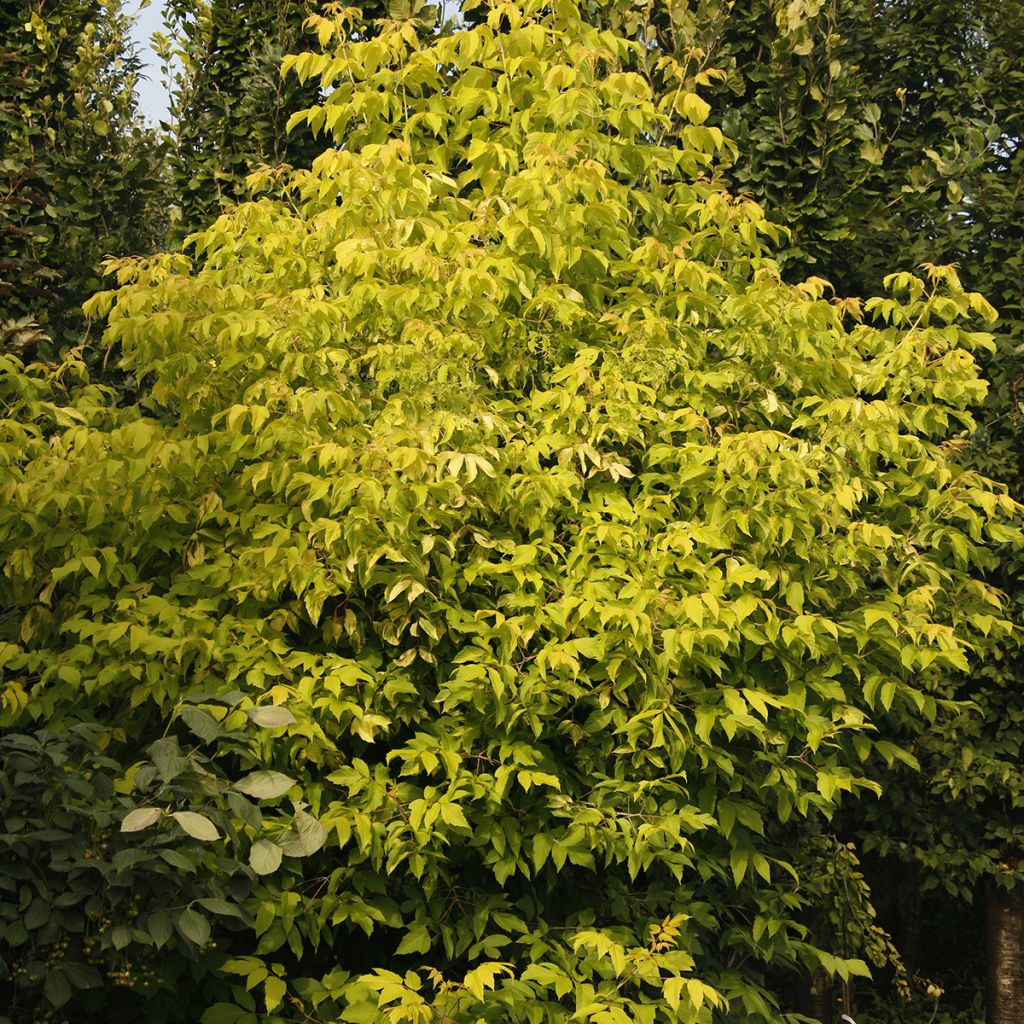

Acer negundo Auratum - Boxelder maple
Acer negundo Auratum - Boxelder maple
Acer negundo Auratum
Box elder, Boxelder maple, Manitoba maple, Ash-leaved maple
Why not try an alternative variety in stock?
View all →This plant carries a 24 months recovery warranty
More information
We guarantee the quality of our plants for a full growing cycle, and will replace at our expense any plant that fails to recover under normal climatic and planting conditions.
Oversize package: home delivery by special carrier from €6.90 per order..
Express home delivery from €8.90.
Delivery to Corse prohibited: UE law prohibits the import of this plant from mainland France to Corse as part of the fight against Xylella fastidiosa. Please accept our sincere apologies.
More information
Does this plant fit my garden?
Set up your Plantfit profile →
Description
The Acer negundo 'Auratum' is a variety of boxelder maple with a beautiful golden colour. Its spring foliage displays a magnificent golden yellow hue, contrasting with the red petioles. In summer, the greener foliage retains yellow highlights. This old female cultivar is always very interesting for its bright foliage, whether planted in isolation in a garden with moist, cool soil, or in drier conditions once established.
The Acer negundo, also known as Boxelder Maple, American Maple, or Negundo Maple, belongs to the Aceraceae family. It is native to the western United States and Virginia, but is also found in Florida, Canada, and Quebec. It is considered an invasive species that has naturalised in France, particularly in Corsica, where it is subspontaneous and subject to special monitoring. This robust, light-loving species prefers the vicinity of watercourses and wet areas, but can tolerate somewhat dry summers once established. It prefers clay-limestone soils, but can adapt to a wide range of moderately acidic soils. In nature, the Acer negundo forms a wide-crowned tree, reaching a height of 15 metres. It is a deciduous tree that sheds its leaves in autumn.
The 'Auratum' cultivar is smaller, reaching a height of 5 to 7 metres with a spread of 4 metres. It forms a short and stout single trunk, with low branches if given space. If surrounded by other shrubs or trees, it will tend to grow taller to seek light. Its habit is naturally oval, rounded, regular, and harmonious, supported by thin and fragile branches that are quite brittle. Its rough bark is ash-grey and cracks over time, taking on a darker grey tone. The young branches are bluish-green and covered with a white bloom. The leaves, 5 to 10 cm long, are divided into 3 to 9 ovate leaflets with pointed tips and very toothed edges. They are golden yellow in spring and chartreuse green-yellow in summer. Flowering, which is quite decorative, occurs in April-May, around the same time or slightly before the young leaves develop. It takes the form of thick clusters of pendulous female flowers, greenish-yellow in colour. This old cultivar, discovered in 1891 by Späth in Berlin, is sometimes sold under the name Acer negundo 'Odessanum'.
Acer negundo ‘Auratum’ prefers a sheltered location away from strong winds and moist soil. Once established, it can tolerate drier soil. This small tree is stunning when planted in isolation in the middle of a lawn, in a medium-sized garden. In a small garden, regular pruning is necessary to control its size. It can also be used to illuminate a darker area of the garden or create a colour contrast with a shrub or small tree with purple foliage, such as a Black Lace elderberry. In a park, at the base of large trees, it creates an interesting intermediate-sized vegetal screen.
Plant habit
Flowering
Foliage
Botanical data
Acer
negundo
Auratum
Aceraceae
Box elder, Boxelder maple, Manitoba maple, Ash-leaved maple
Cultivar or hybrid
Other Acer - Maple tree
Planting and care
The Acer negundo 'Auratum' is planted in spring or autumn in any fertile, deep, and moist soil, in a sunny but not scorching or partially shaded location. Its golden foliage tolerates moderate sun exposure. Beware of strong winds, as its branches are brittle. Keep the soil moist during the first two summers after planting. Mulching can be beneficial to maintain soil moisture. Pruning is necessary for young plants to shape their growth, and then every 3 years to balance the branches and maintain a harmonious habit. Avoid pruning after December, as the sap rises early.
Planting period
Intended location
Care
This item has not been reviewed yet - be the first to leave a review about it.
Spring-flowering shrubs
Haven't found what you were looking for?
Hardiness is the lowest winter temperature a plant can endure without suffering serious damage or even dying. However, hardiness is affected by location (a sheltered area, such as a patio), protection (winter cover) and soil type (hardiness is improved by well-drained soil).

Photo Sharing Terms & Conditions
In order to encourage gardeners to interact and share their experiences, Promesse de fleurs offers various media enabling content to be uploaded onto its Site - in particular via the ‘Photo sharing’ module.
The User agrees to refrain from:
- Posting any content that is illegal, prejudicial, insulting, racist, inciteful to hatred, revisionist, contrary to public decency, that infringes on privacy or on the privacy rights of third parties, in particular the publicity rights of persons and goods, intellectual property rights, or the right to privacy.
- Submitting content on behalf of a third party;
- Impersonate the identity of a third party and/or publish any personal information about a third party;
In general, the User undertakes to refrain from any unethical behaviour.
All Content (in particular text, comments, files, images, photos, videos, creative works, etc.), which may be subject to property or intellectual property rights, image or other private rights, shall remain the property of the User, subject to the limited rights granted by the terms of the licence granted by Promesse de fleurs as stated below. Users are at liberty to publish or not to publish such Content on the Site, notably via the ‘Photo Sharing’ facility, and accept that this Content shall be made public and freely accessible, notably on the Internet.
Users further acknowledge, undertake to have ,and guarantee that they hold all necessary rights and permissions to publish such material on the Site, in particular with regard to the legislation in force pertaining to any privacy, property, intellectual property, image, or contractual rights, or rights of any other nature. By publishing such Content on the Site, Users acknowledge accepting full liability as publishers of the Content within the meaning of the law, and grant Promesse de fleurs, free of charge, an inclusive, worldwide licence for the said Content for the entire duration of its publication, including all reproduction, representation, up/downloading, displaying, performing, transmission, and storage rights.
Users also grant permission for their name to be linked to the Content and accept that this link may not always be made available.
By engaging in posting material, Users consent to their Content becoming automatically accessible on the Internet, in particular on other sites and/or blogs and/or web pages of the Promesse de fleurs site, including in particular social pages and the Promesse de fleurs catalogue.
Users may secure the removal of entrusted content free of charge by issuing a simple request via our contact form.

































